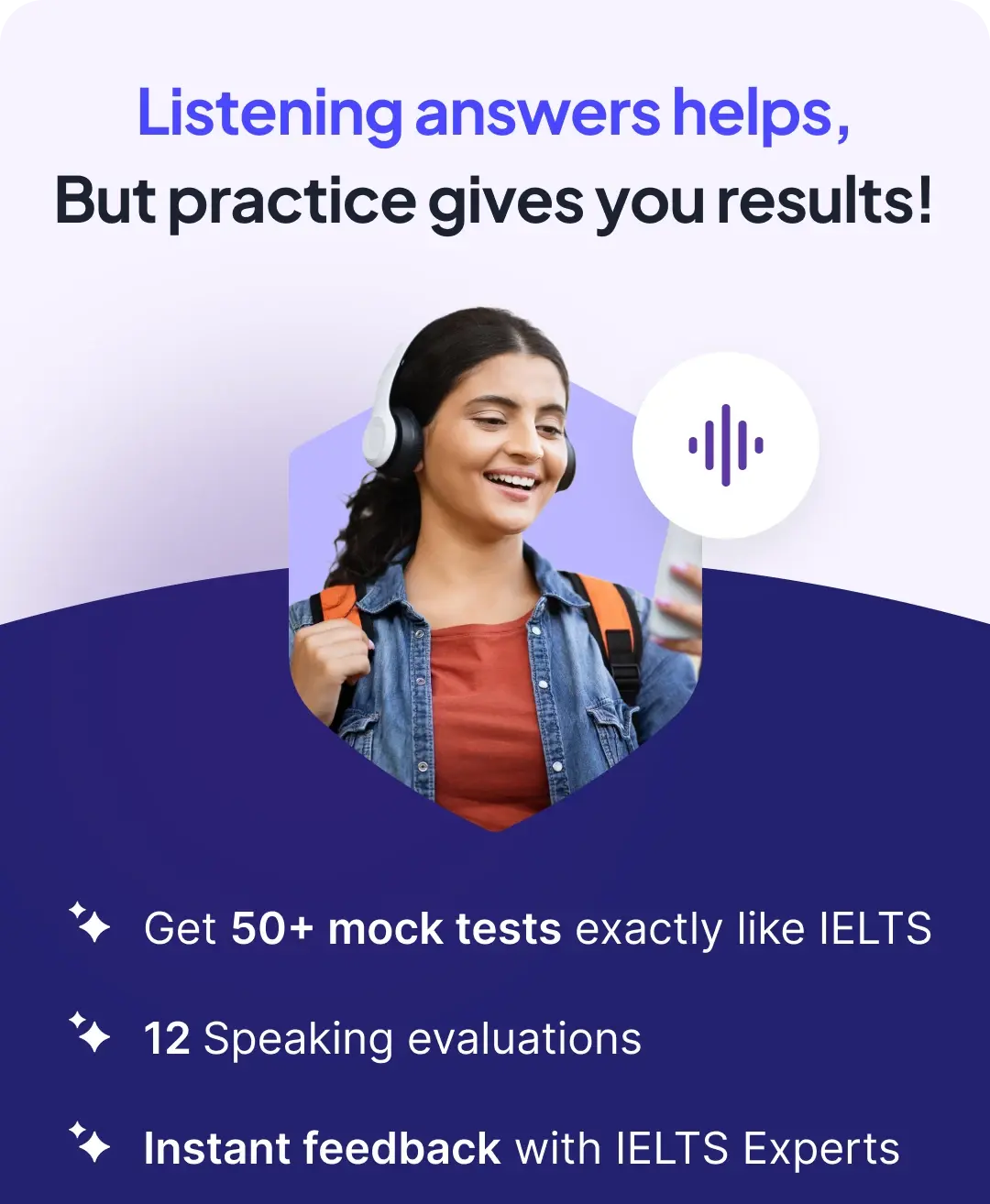Talk about a toy you liked in your childhood.: IELTS Speaking Cue Card
You should say
- What was the toy?
- Who gave it to you?
- How often did you play with it?
174 unique answers with expert feedback
Band >7
00:00
/
00:00
Follow up questions
Follow up questions
What other toys did you enjoy playing with as a child?
How did your childhood toys influence your interests today?
Do you think toys play an important role in childhood development?
Band 7
00:00
/
00:00
Follow up questions
Follow up questions
What other toys did you enjoy playing with as a child?
How do you think toys impact childhood development?
Do you think children today have different toys compared to your childhood?
Band 7
00:00
/
00:00
Follow up questions
Follow up questions
What other toys did you enjoy as a child?
How did your parents react to your love for remote-controlled toys?
Do you think playing with toys like that helped you in any way?
Practice other cue cards
Band 7
00:00
/
00:00
Follow up questions
Follow up questions
What other toys did you enjoy playing with as a child?
How do you think playing with toys impacts childhood development?
Do you think handmade toys are better than store-bought ones?
Band 7
00:00
/
00:00
Follow up questions
Follow up questions
What other toys did you enjoy as a child?
How do you think toys impact childhood development?
Do you think children today have different toys than in your childhood?
Cue 1:What was the toy?
- Start by describing the toy in detail, including its appearance and features.
- Explain why this toy was special to you and how it made you feel.
Example
The toy I cherished the most during my childhood was a bright red remote-controlled car. It was small, sleek, and had shiny wheels that sparkled in the sunlight. I loved how I could control it with a simple remote, making it zoom around the garden and perform little stunts.
Cue 2:Who gave it to you?
- Mention the person who gifted you the toy and your relationship with them.
- Share any memorable moments associated with receiving the toy.
Example
My uncle gave me this toy on my seventh birthday. He always knew how to pick the perfect gifts for me, and I remember the excitement on my face when I unwrapped it. He smiled and said, 'This will take you on many adventures!'
Cue 3:How often did you play with it?
- Discuss the frequency of play and any specific times or occasions you enjoyed playing with it.
- Reflect on how playing with this toy impacted your childhood.
Example
I played with my remote-controlled car almost every day after school. It became a routine for me to race it around the garden with my friends. Those moments were filled with laughter and joy, and it truly made my childhood memorable.
Conclusion
- Summarize your feelings about the toy and its significance in your childhood.
- Mention how it has influenced your interests or hobbies as you grew up.
Example
In conclusion, my remote-controlled car was not just a toy; it was a source of happiness and creativity during my childhood. It sparked my interest in technology and engineering, which I still pursue today.
Following this structure will ensure you cover all the essential points while providing a clear and engaging response to the cue card topic.
Tips to answer this Cue Card
1: Being Vague About the Toy
Candidates often provide unclear descriptions of the toy, which can make their answer less engaging. Specific details help the examiner understand your experience better.
Tip
Describe the toy in detail, including its color, size, and what made it special to you.
2: Neglecting Personal Connection
Failing to explain who gave you the toy and why it was meaningful can lead to a lack of personal touch in your response. Personal stories resonate more.
Tip
Share a brief story about the person who gave you the toy and what it meant to your relationship.
Not Mentioning Frequency of Play
Overlooking how often you played with the toy can make your answer feel incomplete. This detail adds depth to your childhood experience.
Tip
Include specific times or occasions when you played with the toy to illustrate its importance in your daily life.
IELTS Cue Cards asked last week
Reported by Leap students who gave IELTS
All Answers
Here are all the answers by real-users practicing speaking for IELTS Cue Cards on our IELTS Prep App.
Band 8
Band 7
Band 7
Band 7
Band 7
Band 7
Band 7
Band 7
Band 7
Band 7

Explore
473 Cue Cards

Personal Experience
121 Cue Cards

Describing People
66 Cue Cards

Travel
47 Cue Cards

Personal Development
45 Cue Cards

Hobbies/Interests
44 Cue Cards
Environment/Culture
39 Cue Cards

Tech/Media
27 Cue Cards

Education/Work
19 Cue Cards

Social Issues
19 Cue Cards

Describe An Object
16 Cue Cards
Business/Shopping
16 Cue Cards

Food/Cooking
8 Cue Cards
Fashion
6 Cue Cards
Master IELTS Speaking with Leap's Self-Prep Course
Students Enrolled
2,411 Reviews

Master IELTS Speaking with Leap's Self-Prep Course
Students Enrolled
2,411 Reviews



